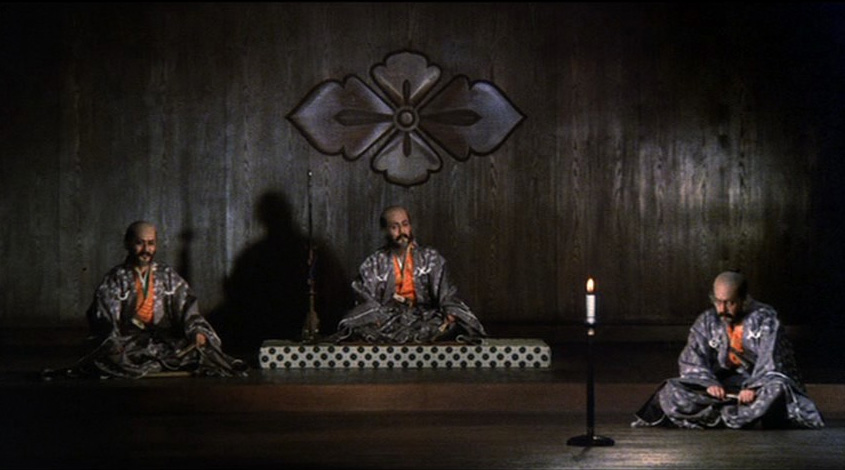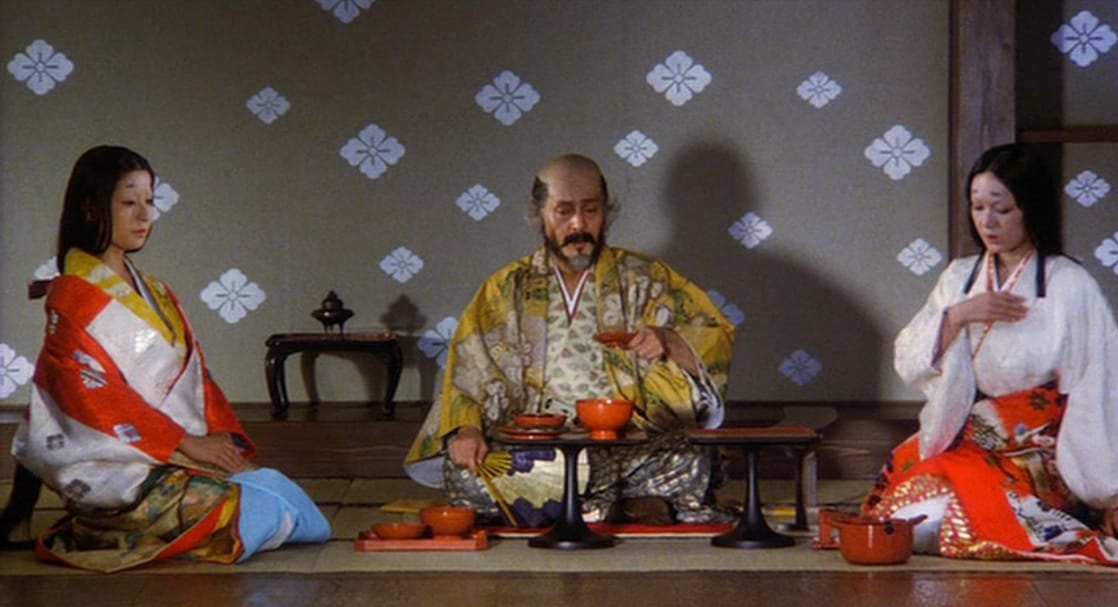I can't figure out how to share this to the Sengoku Daimyo Facebook page (I suspect Ii-dono forgot to give me the appropriate permissions), so it's getting put here.
The February 2021 of "Age of Samurai: Battle For Japan" on Netflix was sadly, NOT a feast for the eyes of any historical costume nerd. The Canadian production lost its director and had its budget nuked. From orbit, with extreme prejudice. At best it is a confusing jumble of facts spewn by experts whose expertise is undercut by editors who want to make sure you see all the Bright Red Blood and pretty animated maps they did spend their money on. The Covid-19 pandemic didn't help and probably resulted in a lot of shortcutting. Everything is shot at the same locations with a little set re-dressing and it looks like they bought up a bunch of stock armor, vintage kimono and threw it in a pile and said, "Ready, set, go!" At best, we get samurai in solid colored hakama and kimono, at worst, we get Toyotomi Hideyoshi flapping around in home decor fabric so badly sewn you know it was whacked together on an impossible deadline, badly ironed, and flung onto an actor.


Where it does better - and I have to credit Kerry Porter of Ohio Kimono for any influence she had here - is the samurai women. She selected from vintage kimono that resembled the look of 16th century styles and recut and layered them so they actually look pretty good. In this screenshot, for example, she used a colorful robe for the outer layer, you can see an appropriate number of layers at the collar line and an obi recut to a narrow, front-tied style which is appropriate for the period.
A shame, really. It could have been good.
All of which brings me to the 1980 Akira Kurosawa film, "Kagemusha ("Shadow Warrior)." This is the one that Francis Ford Coppola and George Lucas threw financial and artistic support behind when Toho Films couldn't afford to complete the film. 20th Century Fox got international film distribution rights out of the bargain and we got a veritable feast for the eyes and a compelling story about a peasant with a striking resemblance to daimyo Takeda Shingen. Here we see Shingen (center), his brother Nobukado (left) and the kagemusha (right). All three are wearing the same hitatare kamishimo outfits, but the body language tells all. The peasant, just spared from crucifixion, has no choice but to agree to be a body double for the warlord. (Shingen and the peasant are both played by the incomparable Tatsuya Nakadai.)

Back in the early 2000s when I was still living in Oakland and getting into portraying a Japanese in the SCA, I first saw this film. My exclamations over the costumes by Seiichiro Hagakusawa were so loud and frequent that they rousted my roommate from his video game in another room to find out why.
Hagakusawa replicated extant 16th century garments and put them on the characters. Here's Oda Nobunaga (Daisuke Ryu) wearing one inspired by a pieced dobuku owned by Uesugi Kenshin. (Spare some love for the retainer in the red and white ombre dyed kataginu kamishimo too!)


And another which was given by Toyotomi Hideyoshi to Nanbu Nobunao. (This one is in the Tokyo National Museum.)


And Tokugawa Ieyasu is in a version of another extant garment. 

Nobunaga's informal ensemble is based on a well known portrait. 

Netflix's samurai and daimyo all look underdressed. "Kagemusha's" peasants get decorated clothing and retainers wear livery
Feudal Japan was hierarchical. Clothes denote not only who one is but how much power they wield, how much respect they demand, how much deference they give to their superiors, and so forth. If you go back to the head of this entry to the shot of Shingen, his brother and his peasant double all wearing identical outfits, the body language tells you who is who.
In feudal Japan you also dress for what you're doing, for what the occasion demands, whether your overlord is holding court or you're making battle plans.


We even get glimpses of what the women of Shingen's circle would wear. Multilple layers and the woman at right has worn her uwagi koshimaki fashion. And let's enjoy that bright yellow dobuku the kagemusha wears here as he tries to pass with women who knew Shingen intimately: even the daimyo wears flowers. 
In fact his outfit is so scrumptious, let's get a better look as he feigns drunkeness to deceive his women. 
I would happily wear any uwagi in the shot below. Look at everyone in this shot. Look at the peasants at the back.

The V&A even has one of the costumes in their collection. Go here to see.
Film costumes are not documentation for SCA purposes, but these are so well done. Hagakusawa had the budget and the access to the right textiles, properly embellished and used, he copied museum pieces for several costumes. Everyone, including people in the background, looks as they should.
Here's Nobunaga flaunting a European cape. Spare a glance for the guy walking at his stirrup:neat, crisp, decorated textiles. 
Cute grandson is cute - and dressed as his station befits. 
Less formal women's clothing.

This is a terrific movie for a lot of reasons: it works as the historical fiction that it is and tells a tale of a man trapped by circumstance into pretending he is someone else. The battles are epic and heart rending. Nakadai is at the height of his powers in not one but two roles. Truly, "Kagemusha" is a feast for the eyes - and I can't wait to sit down and watch it again.
no subject
Date: 2021-03-29 04:24 am (UTC)no subject
Date: 2021-03-29 01:06 pm (UTC)(very excited)